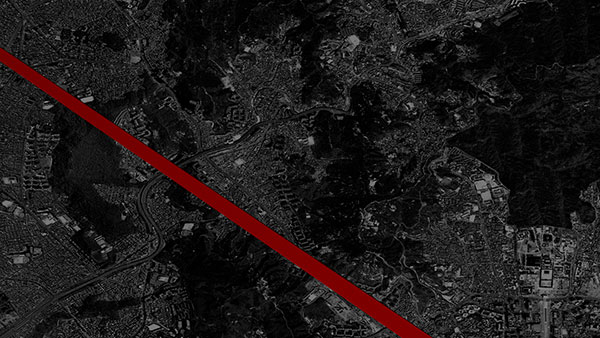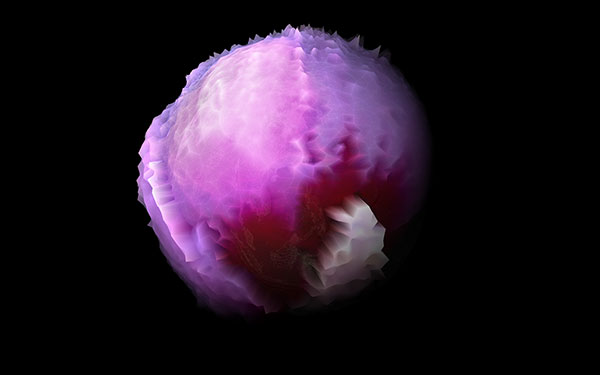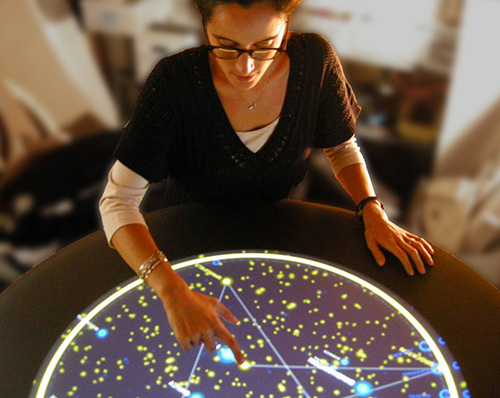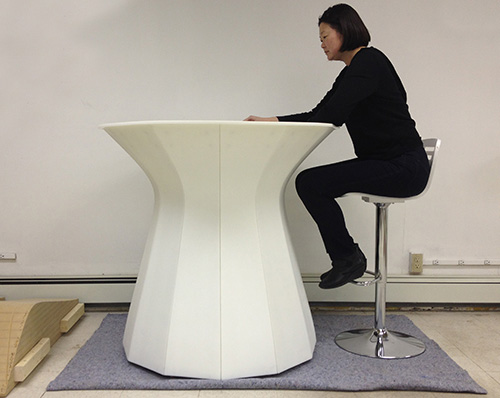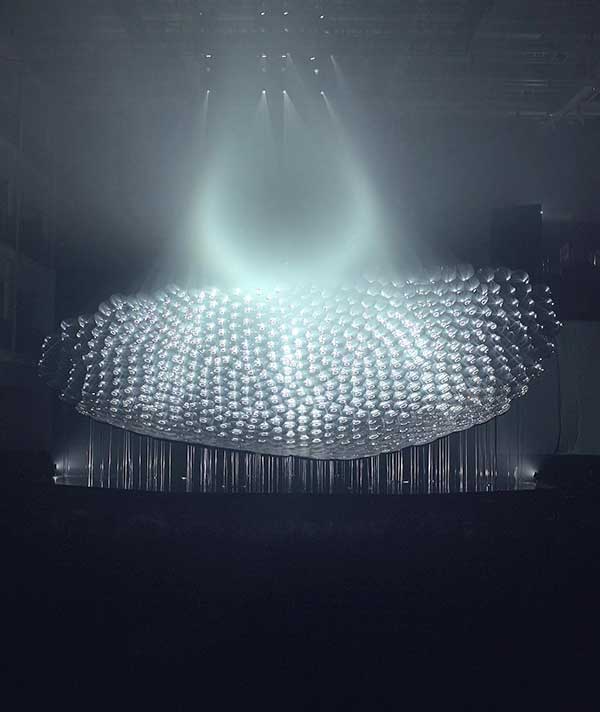
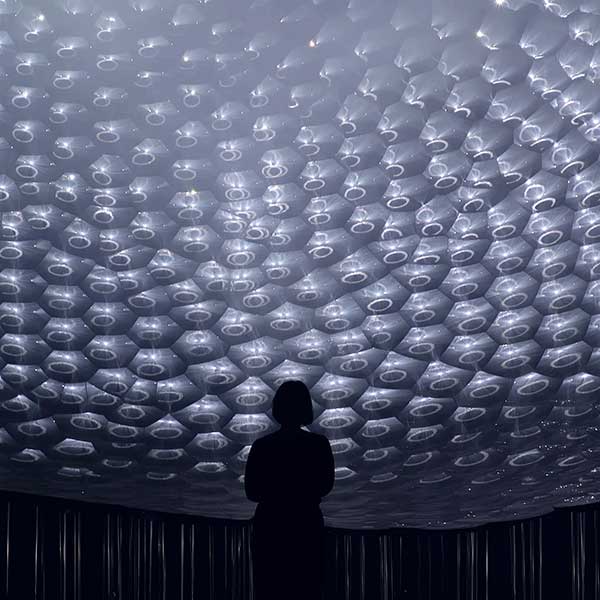
Light Barrier Third Edition, Concave mirrors, Projection, Scanning, 2016
The installations present a semi-material mode of existence, materializing objects from light. Light Barrier Third Edition is a new installment in this series that exploits the confusion and non-conformities at the boundary between materials and non-materials, reality and illusion, and existence and absence.
The 6-minute sequence employs the motif of the circle to travel through themes of birth, death, and rebirth, helping shift the audience into the new mode of existence. The artists use the circle often in their works to evoke the fundamentals of materials and the external connection between life and death.
The artists are interested in how impressionist painters were inspired by the introduction of photography to create 'viewer-less images'. The installation allows images to arise from the canvas, creating painting outside of perspective. It is a direct approach to the artists’ theme of ‘drawing in the air’.
In this edition, 8 architectural video projectors are split into 630 sub-projectors using a structure of concave mirrors designed by artificial nature. Each mirror and its backing structure are computationally generated to create a group that collaborates to form the single image in the air. By accurately calibrating each of the 16,000,000 pixels individually, light beams can be merged in the haze to draw in the air. 40 channels of audio are then used to build a sound field that helps to solidify the projected phenomena in the audience's mind.
The third edition of Light Barrier was commissioned by the Asia Culture Center in Gwangju. The technology is enabled by Rulr, an open source graphical toolkit for calibrating spatial devices, created by Kimchi and Chips.
Commissioned by Asian Cultural Centre, Gwangju , Engineering by Chung Youngjae, Studio Sungshin Sound design by Junghoon Pi , Videography by Kimchi and Chips
Light Barrier Third Edition, Concave mirrors, Projection, Scanning, 2016

Light Barrier Second Edition, Concave mirrors, Projection, Scanning, 2015
Videography with Florian Koah , Sound by Junghoon Pi (junghoonpi.com) / Junyoung Park , Photos by Hanneke Wetzer (c) 2015 and Kimchi and Chips.
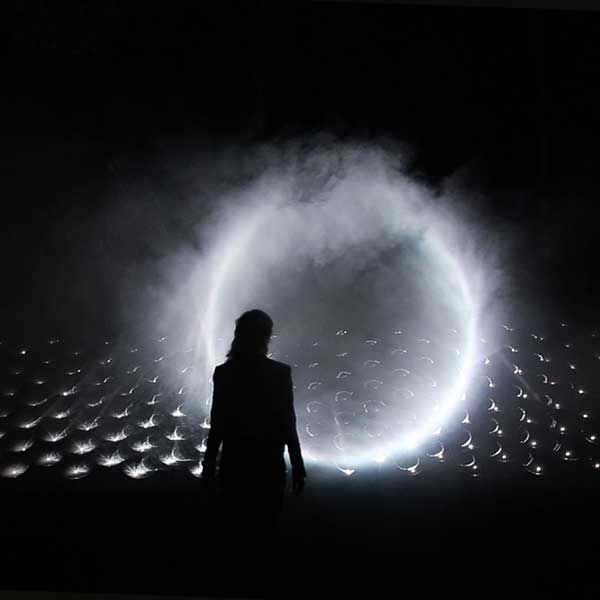
Light Barrier, Convex mirrors, Projection, Scanning, 2014
Additional images and video from Alexander Delovoy and Tom Higham.
Kimchi and Chips is a Seoul based art studio founded by Elliot Woods (UK) and Mimi Son (South Korea). The studio creates actions which superimpose material and immaterial modes of existence, suggesting new technical and artistic attitudes. These actions actualise fictional realities as physical experiences, often employing digital light and computation to manipulate physical space.
They formed in 2009 to combine the disciplines of code, form, material, concept and mechanism. Since then, they have created installations and dialogues which have been exhibited on four continents, developing natural interactions between people, nature and the possibilities of the digital network.
Kimchi and Chips

